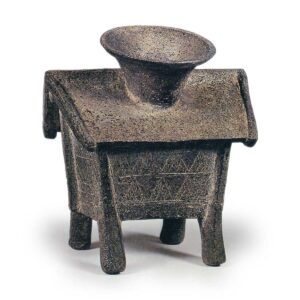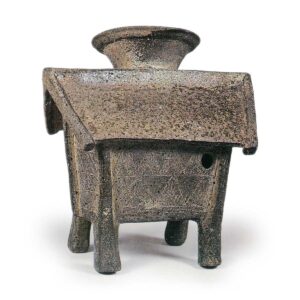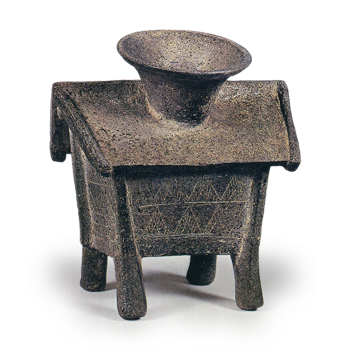

Excavated from Musodani, Wakayama City
6th century
Total height 16.8cm, mouth diameter 7.6cm, length of roof 15.0cm, width of roof 10.2cm
Tokyo National Museum
This is a type of figural Sue ware modeled after a gabled house. The roof has a longer ridge than the eaves, with a roll at the gable end, to which a narrow gable plate is attached.
The four walls of the house are slightly tapered, and a munemochibashira (pillar) is shown in the center of the gable.
The four walls are decorated with a double-lined serrated pattern on the flat part and a single-lined serrated pattern on the gable part, with chinkanshi patterns on the upper and lower parts. The orals on one roof and the small hole in the upper right corner of the opposite wall indicate that this vessel was made with a cedar tree design in mind. The house has four high legs and was probably made to resemble a warehouse on stilts. This type of house-shaped earthenware is thought to have been copied from a similar piece in Baekje, but the Baekje piece differs in that the neck of the mouth is located in the center of the roof lid. This is one of the earliest examples of Sue ware that was made by transforming a single object, which is almost exclusively limited to vases. The ware is extremely solid, with a natural yellowish-green glaze over a blackish-brown surface.



